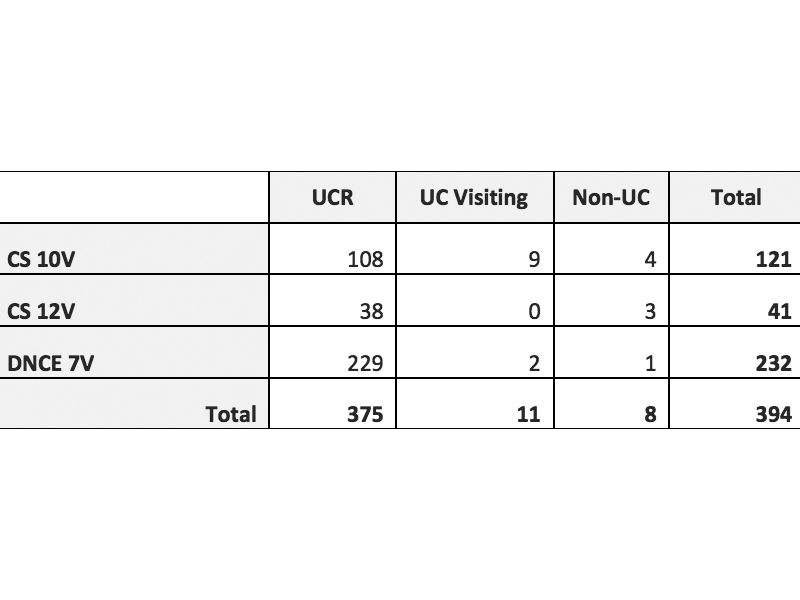
A total of 375 UCR undergraduates enrolled in UC Riverside online courses for the 2014 winter quarter, with 11 additional students coming from other UCs and eight who were non-UC students, according to statistics from the UCR Office of the Registrar.
Funded by a $10 million state allocation, the Innovative Learning Technology Initiative (ILTI) extends the scope of online hybrid courses to alleviate bottleneck enrollment in high demand courses and expedite graduation rates. The initiative encourages online course development and cross-campus enrollment.
UCR offers two computer science courses, CS 10V and CS 12V, and one dance course, DNCE 7V, for the current quarter.
Fourth-year bioengineering major Elizabeth Fabio said that taking CS 12V was convenient to her schedule. “Well this is the first time that I’ve ever taken an online course, so I was kind of apprehensive because I thought … I wasn’t going to get that personal teaching experience. But after the first online video, it’s recorded (and) kept in archive, so I could always go back to it.”
A few technical difficulties that Fabio points to include the inconsistencies of the online live-stream or even simply human error when the lecture was not recorded. Fabio expressed that online classes served as a useful alternative, but should be geared toward impacted general education classes. “Truthfully, I wouldn’t want to see upper division classes online, because … it’s kind of important that you see the teachers more often,” she said.
With concerns about an online enrollment cap still lingering from last month’s UC regents meeting, UC Provost Aimee Dorr previously stated that there is broader acceptance and interest across the board for online education. According to the ILTI site, over 120 faculty and campuses expressed interest in the overall development or creation of an online class as of March 2013.
When asked about the online course cap for individual campuses, UCOP Media Specialist Shelly Meron explained the process: “Faculty determine enrollment caps for these online courses, for students from their home campus and students enrolling from other UCs,” Meron said. “ILTI courses were chosen through an RFP (request for proposal) and part of that process is determining how much funding each course will need to be developed or enhanced.”
As the professor for UCR’s online dance course, Jacqueline Shea Murphy says the enrollment cap depended less on course size and more on available financial support.
“In my case, it depends on TA support available — the course size was determined by the amount of TA funding (each TA was assigned to about 75 students),” Murphy says. “This is the same way it is decided in a (face-to-face) class … the only difference is that for the online version we didn’t have to consider classroom size as well as TA support.”
On a last note, Fabio encourages all students to take an online class. “Just be proactive with it if you really want to do it,” she said. “I’d say take the chance with it if you really need a class.”








